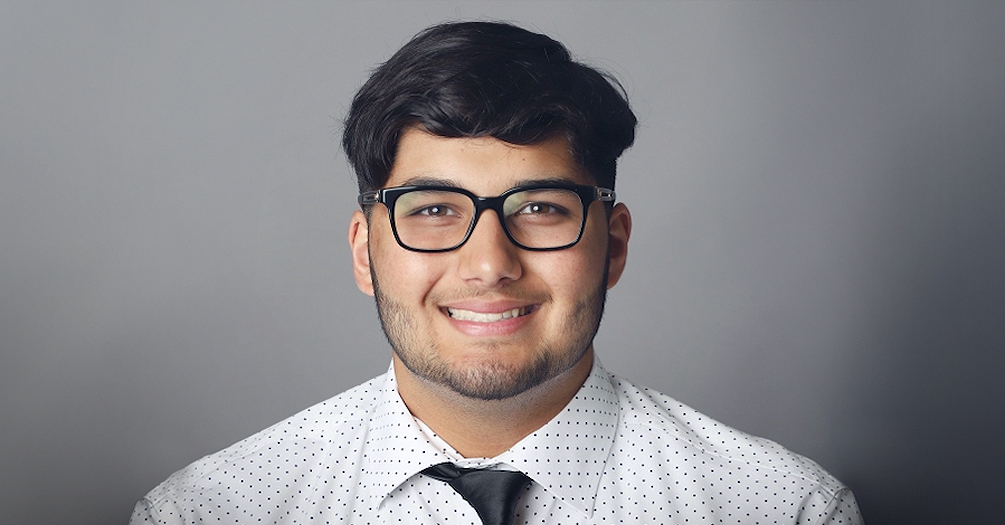Building a foundation in public health for future in medicine

Sukhman Parhar
BS student, Bachelor of Science
Sukhman Parhar and his family once called New York City—the biggest city in America—home. While his story begins there, it mostly unfolds in rural Hudson, Michigan—population 2,500—where he grew up. And Hudson is just 55 miles south of the University of Michigan campus, home for Parhar for the last four years. When Parhar came to Ann Arbor in 2020 for his freshman year, majoring in public health wasn’t yet on his radar.
A career in health and medicine had always been his aspiration, but after stumbling upon a listing of undergraduate majors offered by the university, public health would become the way to achieve this goal.
A passionate pre-med student, Parhar had his sights set on majoring in neuroscience but would eventually realize it wasn’t the right fit for him. With the need to declare a major looming, he was scrolling through programs offered by the university when he came across the public health major.
Like many students who "discover" public health, Parhar says he did not know much about the field, or so he thought.
“I was always interested in racial disparities in medicine because my mom had a lot of heart issues growing up,” he said. “I saw a lot of the things she had to deal with that others who didn't look like her did not have to deal with.”
All of this led Parhar to apply to the School of Public Health’s undergraduate program, where prospective students apply during their sophomore year and complete their degree during their junior and senior years. Ultimately, he chose to pursue a Bachelor of Science degree in Public Health Sciences.
“I wasn't really aware of public health as a career until I came to college,” he said. “And then, I was like, ‘Wait!’ This is actually what I want to do!”
Specifically at Michigan Public Health, Parhar enjoys the project-based classes and the opportunities to see how class teachings apply to real-life scenarios.
He also learned quickly about the tight-knit community that the school offers.
“You can build on bonds with a lot more people than you’d expect,” Parhar said. “And not just other undergraduate students, but also through regular interactions with Masters and PhD students as well.”
Asian Health Disparities Internship
Parhar’s passion to address disparities in Asian health remains strong today. He was able to get hands-on experience working on research addressing health disparities in Asian populations through an internship at Stanford University CARE (Center for Asian Research and Education).
During the internship, he worked on two research projects;
- How disparities in mental healthcare and access impact affect sleep, which was broken down by region (i.e. East Asian, South Asian, etc.).
- Brain cancer diagnoses in Asian individuals, with a focus on focusing on how early or late individuals are diagnosed and the intensity of their cancer.
Since his time as an intern involved working with study design and statistical analysis applied in an epidemiology context, Parhar felt that the classes he had taken at Michigan Public Health had prepared him so he could “hit the ground running” and dig into more complex parts of the research faster.
Having seen the effects of Asian health disparities in his own life, Parhar values the experience of learning more about the topic from an education standpoint. Right now, Parhar is applying to Master of Public Health programs for next year to further study epidemiology. He believes his undergraduate education in public health is an invaluable asset in his aspiring career as a physician.
Advice for future undergraduate public health students
For Parhar, the unique experiences the school has to offer are a huge benefit to the
program.
“You can get really close to professors who are doing world-class research at one
of the top public health schools in the country. Find ways to get involved.”
He also highlights building connections with other students and alumni through networking
opportunities.
“You can meet so many interesting people and learn about different types of public
health work and career paths. I feel like that's the coolest part of public health.”
- Interested in public health? Learn more today.
- Learn more about the undergraduate program
